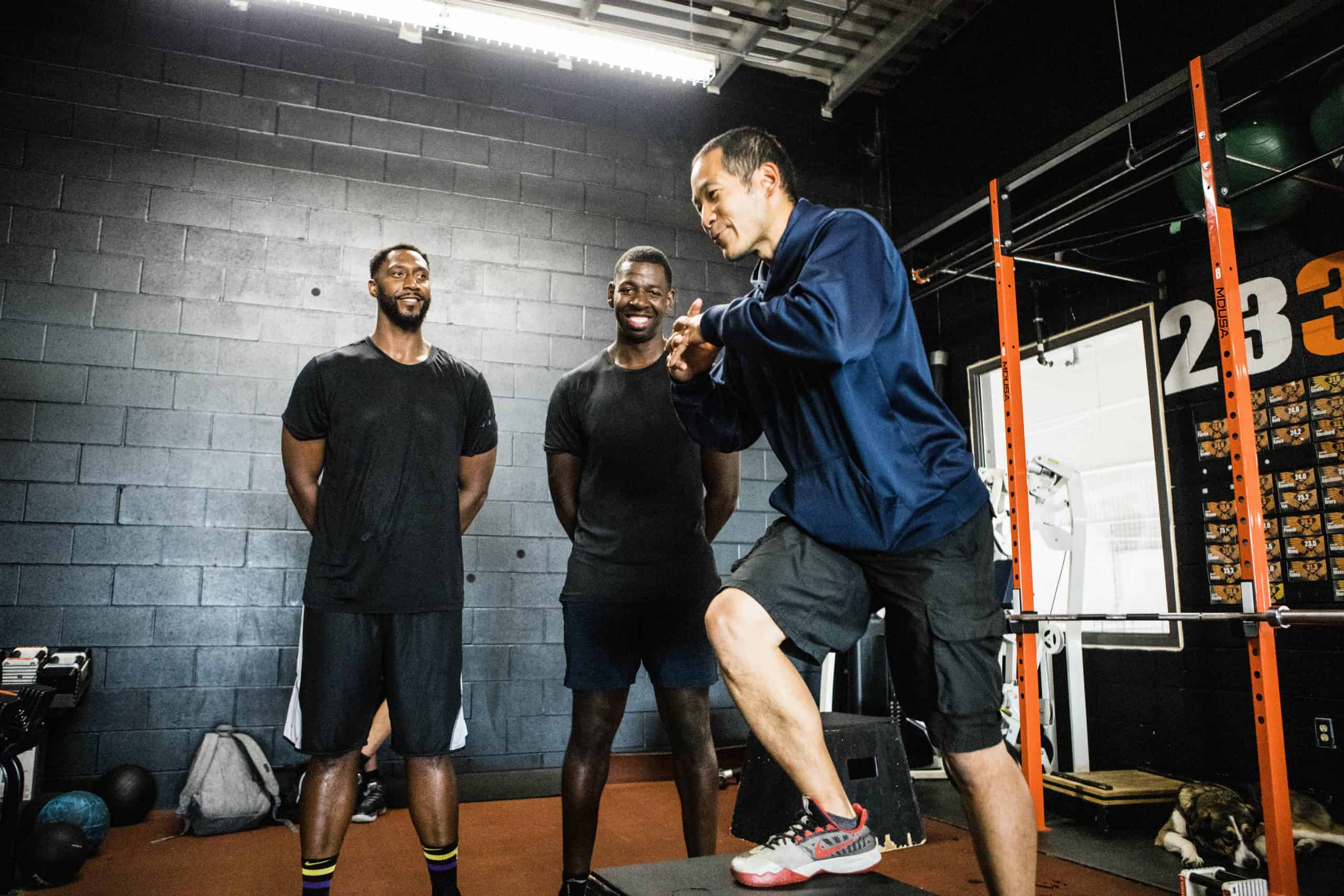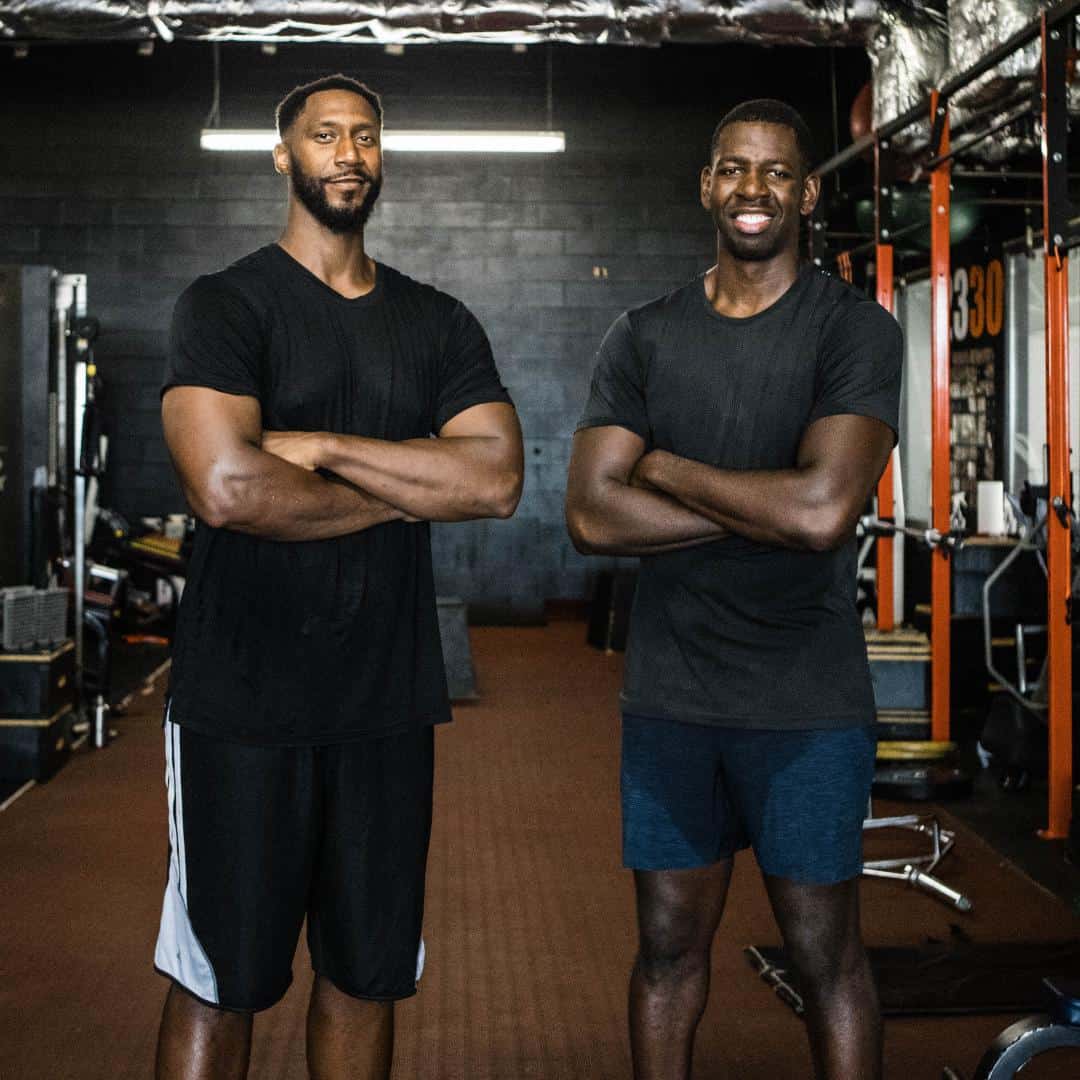Pro basketball bromance between two Mississauga athletes key to mental resilience
Published August 6, 2020 at 1:01 am

On the second floor of Scotiabank Pond, nestled away in the northwestern corners of Toronto, two best friends lift together: former NBA player Andrew (Drew) Nicholson and 10-year veteran Jasonn (Jay) Hannibal. The former was a product of Father Michael Goetz; the latter, Port Credit. The two have a weekly routine: they lift together every day, five times a week. They rest, then work on their basketball skills after.
It’s an off-season ritual that started back in 2013 after Andrew came home, fresh off his NBA rookie season with the Orlando Magic.
“I reconnected with Jay in 2013 when I was driving downtown. I saw him walking across the street. I said, ‘Ayo Jay, is that you?’ He was like ‘Yeah.’ He was going downtown and I gave him a ride.”
Andrew then told him he got a trainer.
“If you wanna come workout with me, it’ll be good. It’ll be good for the both of us,” he told him.
Since that conversation in Andrew’s car, the two have been off-season workout partners for seven years. But the two couldn’t have had more divergent paths.
Drew overachieved — initially, he was just using basketball to get a free education at St. Bonaventure University but realized he had a real shot at the NBA in his sophomore year. After finishing his physics degree, he was drafted 19th overall in 2012, played five years in the NBA and has played for Team Canada.
Jay is still striving for the NBA, but he’s had to defy the odds as a pro — he had a less-than-stellar college career, but has had to prove his worth to every pro club around the world.

Andrew and Jay
Under COVID-19, a looming question mark persists ahead. Drew played in China this past season, but doesn’t know where he’ll be next. Jay signed to a team in Hong Kong, but after its third COVID-19 wave, plans are up in the air.
In the midst of uncertainty, the daily monotony inside the Fits Toronto gym can become mentally taxing — on bad days, training can seem utterly meaningless. Trainer Thomas Lam emphasizes the importance of developing a system — non-negotiable, excellent daily habits — which fuels an athlete’s sense of identity.
“If (athletes) take care of their daily habits and what they do on day-to-day (basis), which represents their systems, the ultimate goal almost just takes care of itself,” said Lam.
For both Drew and Jay, imposing order in the face of uncertainty has been key to their focused mindset. But the two remain mentally resilient because of one key factor: they have each other, holding each other accountable day in and day out.
“We just push each other every day, man” said Drew. “You just have to be obsessed with getting better.” The two share that obsession to get better each day, and their unbreakable bond became strongest while they were in Washington together.

Back in Summer Sixteen, Drew signed the biggest contract of his NBA career: a four-year, $26-million deal with the Washington Wizards. He invited Jay to come watch a pre-season game. While Jay watched from the stands, he ran into a front office exec who was surprised to hear Jay was still looking for a job.
If he became a player development intern, which meant being a Wizards practice player, he’d be guaranteed a spot on the Summer League team. He complied and spent the 2016-17 season with Drew.
“I owe a lot to him, a lot to him,” emphasized Jay.
“I think that spending time with (Drew) and watching my improvement in comparison with him and just him saying he believes in me…I feel like that’s big because he’s my boy. He’s gonna be honest with me and I always tell him to be completely honest.”

While Washington seemed like a catalyst to both their pro careers, the initial highs were short-lived. That 2016-17 season became the fifth and final season of Drew’s NBA career. Much was expected from him after his four seasons in Orlando, and he failed to meet the Wizards expectations early — one that came with a $6 million cost per year to the franchise. He was traded to Brooklyn after 28 games and after only 10 games in Brooklyn, he was traded to Portland where he’d later be released.
And the peak of Jay’s pro career at Summer League was a mere flash in the pan, having only played 6.5 minutes in one game.
But c’est la vie in the cut-throat world of pro basketball.
“The interesting thing about the pandemic is that athletes are extremely resilient by nature,” said Onika Green, Mental Training Coach at Train the Mind. “So, when the rest of the world started teaching resilience…it was a skill that most athletes had already honed.”
“They don’t fear failure, but see it as a growth opportunity,” added Green.
And going through the trials of 2016 prepared the two for the uncertainty of 2020 and beyond.
Drew admits he doesn’t always feel like working out, but maintains a resilient mindset by finding a way to balance the highs and lows.
“If you can control your mindset through the ups and downs, and get that equilibrium, where you’re just right in the middle, it’ll definitely sustain you through the good and the bad times,” said Drew.
“Once you’re high, you don’t want to be too high. Once you’re low, you don’t wanna get too low, so if you’re able to shift yourself back to right on track, then you’re fine.”
The two big men from Sauga don’t know how much longer they’ll need to continue training, but their friendship, their unbreakable bond, will keep them resilient amid the uncertainty ahead.
insauga's Editorial Standards and Policies advertising





